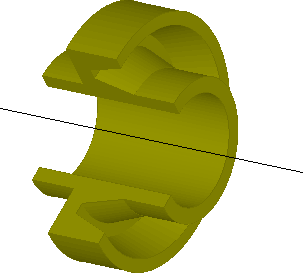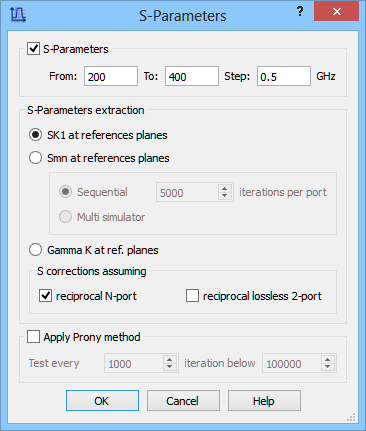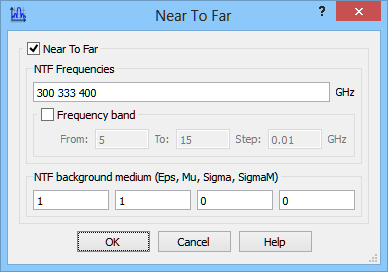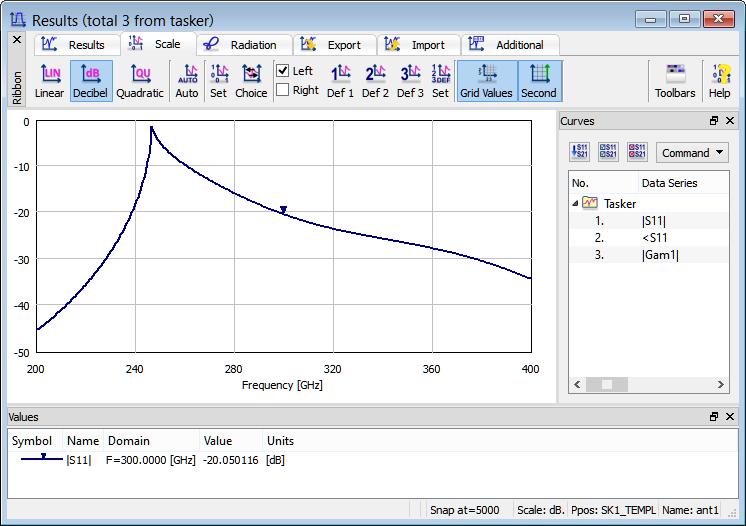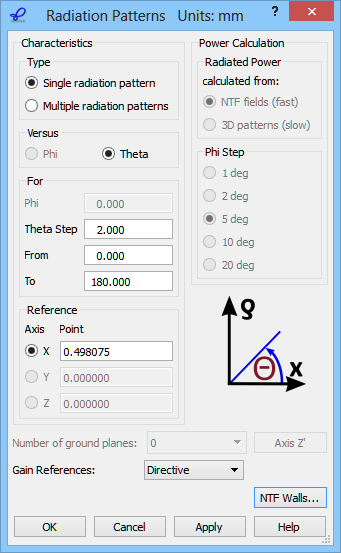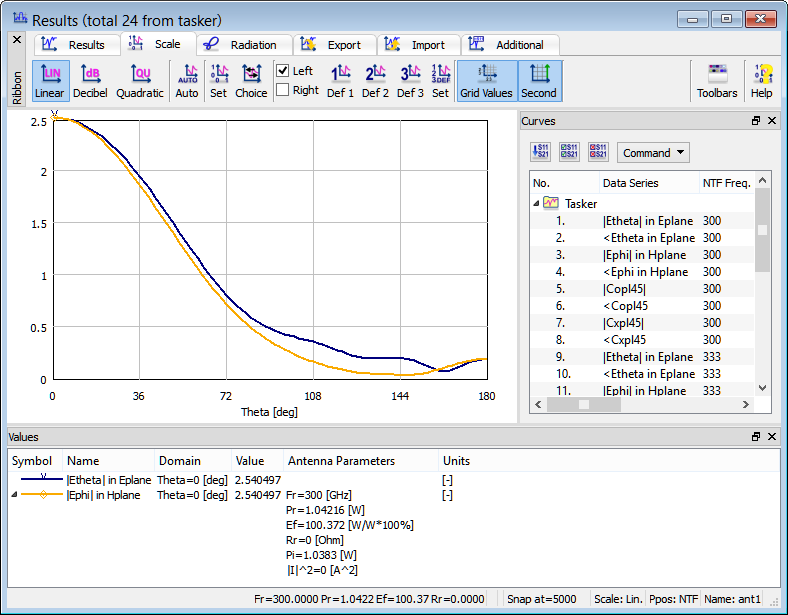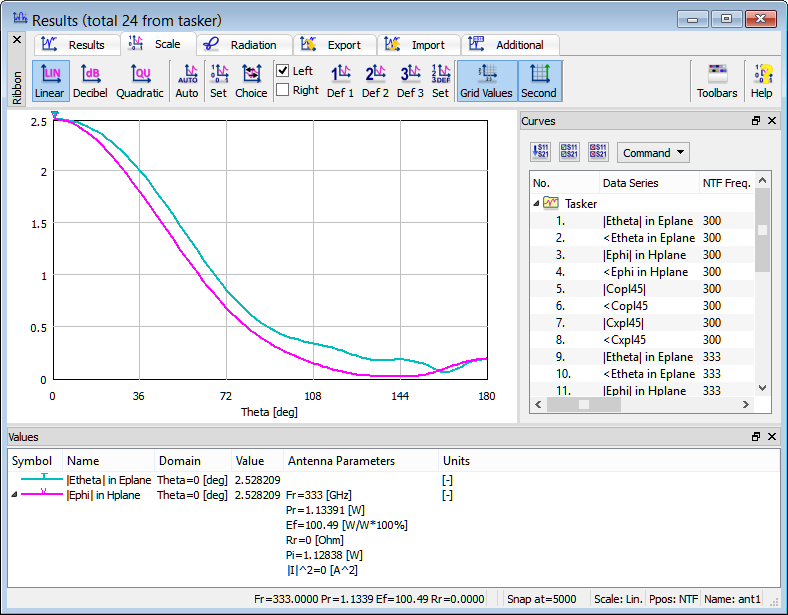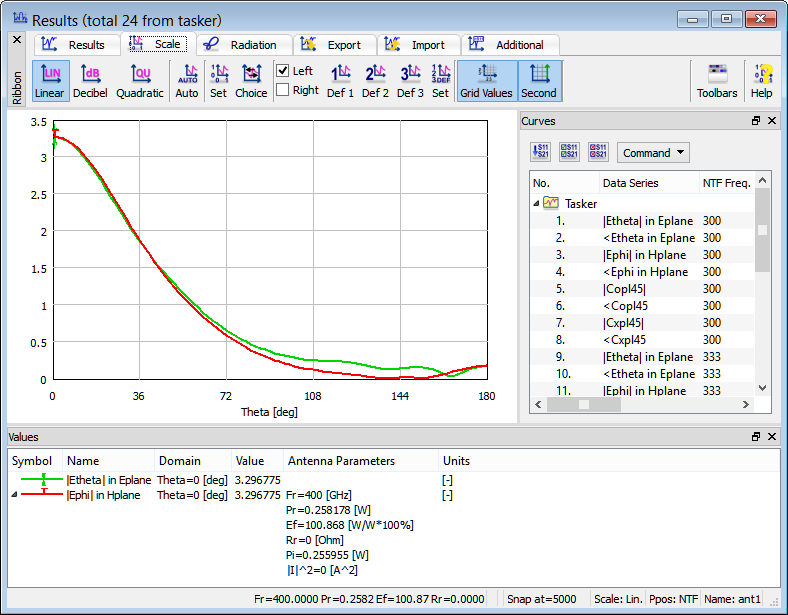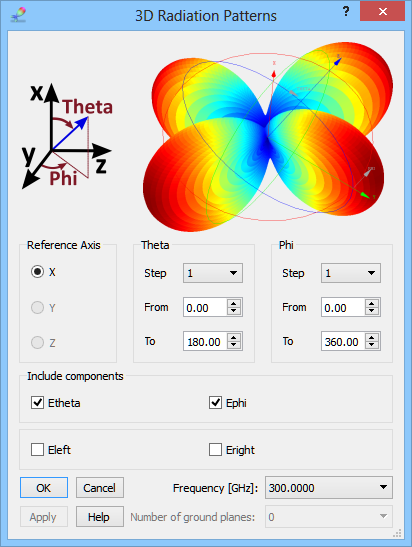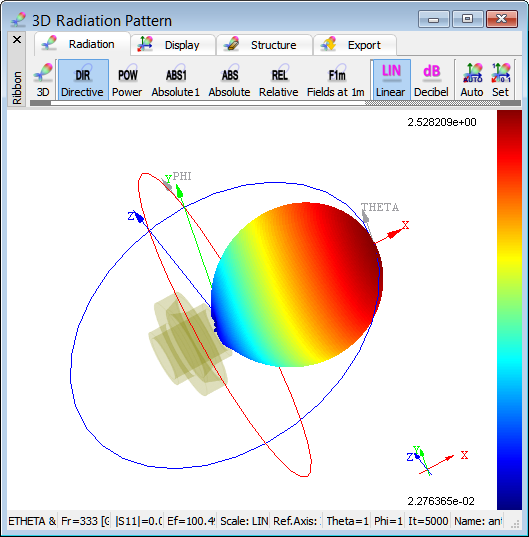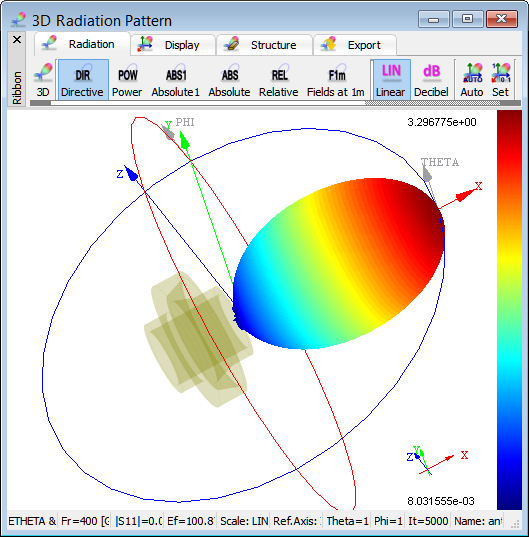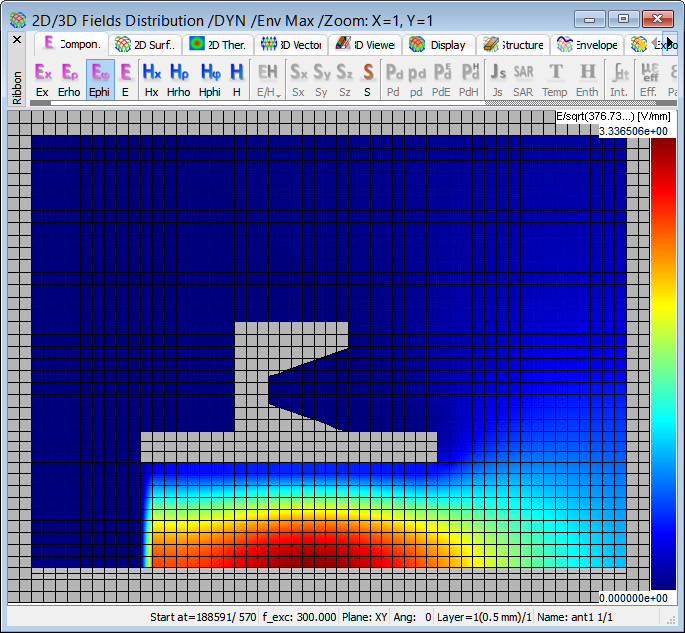Simple horn antenna (V2D BOR)
The present example considers a simple axisymmetrical horn antenna with one corrugation (V2D BOR).
Simple horn antenna (V2D BOR).
The structure that is analysed herein is an axisymmetrical horn antenna. Axial symmetry allows for performing the antenna analysis with ultra-fast vector 2D Bessel and FDTD hybrid solver (V2D BOR) designated for Bodies of Revolution (BOR) structures. This solver allows for analysing only half of structure's long-section, which results in its extremely fast performance. The structure should be drawn in a way that its symmetry axis coincides with project symmetry axis ρ=0 (in the QW-Editor and QW-Simulator referred as y=0).
Simple horn antenna (V2D BOR) project in QW-Editor.
In the simulation model, the NTF Box (green box) is a virtual box determining the boundaries at which the near-to-far field transformation will be executed for the purpose of calculating the radiation patterns.
In case of radiating scenarios, the entire project should be terminated with absorbing boundary conditions to model the free space surrounding. In this case we will use MUR absorbing boundary conditions in a form of MUR Box (blue box).
The antenna is fed with transmission line input port, placed at the waveguide, exciting circular waveguide fundamental TE11 mode.
For the purpose of calculating antenna reflection coefficient and radiation pattern, S-Parameters and Naer To Far postprocessings are activated. The S-Parameters postprocessing is set from 200 GHz to 400 GHz with the frequency step of 0.5 GHz. The radiation pattern calculations are set at 300 GHz, 333 GHz and 400 GHz.
S-Parameters postprocessing and Near To Far postprocessing configuration dialogues.
Reflection coefficient of the considered horn antenna.
We wish to calculate the 2D radiation patterns versus angle Theta varying between 0 and 180 degrees with a step of 2 degrees. The definition of the angles is explained in the lower right part of the 2D Radiation Patterns configuration dialogue.
2D Radiation Patterns configuration dialogue.
2D radiation patterns calculated at 300 GHz.
2D radiation patterns calculated at 300 GHz.
2D radiation patterns calculated at 300 GHz.
3D radiation pattern, with both Phi and Theta varying in steps, can be calculated in the 3D Radiation Pattern window. The 3D Radiation Patterns dialogue allows setting the reference axis and steps for angles Phi and Theta, defined with respect to that axis in the same way as for the 2D radiation pattern case. A single calculation frequency is also selected.
3D Radiation Patterns configuration dialogue.
3D radiation pattern calculated at 300 GHz.
3D radiation pattern calculated at 333 GHz.
3D radiation pattern calculated at 400 GHz.
Distribution of time-maximum envelope of Ephi field component at 300 GHz.




